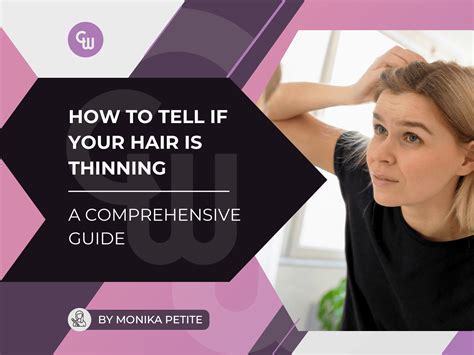Introduction
Thinning hair affects millions of people worldwide, causing concerns about confidence and well-being. While there is no cure for hair loss, there are various treatments and strategies available to manage it effectively. One such option is gentle, mild, permanent hair colour, which can provide a discreet and long-lasting solution to thinning hair.

Understanding Thinning Hair
According to the American Hair Loss Association, approximately 50% of men and 25% of women experience some degree of hair loss by the age of 50. Thinning hair can result from several factors, including:
- Genetics
- Hormonal changes (e.g., menopause, pregnancy)
- Medical conditions (e.g., thyroid disease, lupus)
- Medications
- Stress
Benefits of Gentle, Mild, Permanent Hair Colour
Gentle, mild, permanent hair colour offers numerous benefits for thinning hair, including:
- Enhancing hair volume: The dyes in permanent hair colour can penetrate the hair shaft, increasing its diameter and creating the illusion of thicker hair.
- Camouflaging scalp visibility: When coloured to match the natural hair colour, permanent hair colour can effectively conceal the scalp, making it less noticeable.
- Boosting confidence: Achieving a fuller, more youthful appearance can significantly improve self-esteem and reduce anxiety.
Choosing the Right Hair Colour
Selecting the right hair colour for thinning hair is crucial. Here are some guidelines to consider:
- Natural look: Opt for shades that complement your skin tone and natural hair colour. Avoid drastic colour changes, as they can draw attention to thinning areas.
- Consider your scalp coverage: If you have significant scalp visibility, choose a colour that is slightly darker than your natural hair colour. This will help blend the scalp and create the illusion of thicker hair.
- Permanent or semi-permanent: For long-lasting results, choose permanent hair colour. However, if you prefer a more temporary solution, semi-permanent hair colour may be a suitable option.
Application and Maintenance
Applying permanent hair colour requires following the manufacturer’s instructions carefully. It typically involves three steps:
- Mixing the dye: Combine the colouring cream and developer in the provided ratio.
- Application: Apply the mixture to clean, dry hair, paying extra attention to roots and thinning areas.
- Processing: Leave the hair dye in for the recommended time, usually 20-30 minutes.
Regular maintenance is essential to preserve the colour and hair health. This includes:
- Touch-ups: As roots grow, touch up the colour every 4-6 weeks.
- Conditioning: Use deep conditioning treatments regularly to keep hair hydrated and prevent breakage.
- Sun protection: Protect coloured hair from UV rays by using hats or sunscreen.
Tips and Tricks
- Use a wide-toothed comb to prevent hair breakage during application and combing.
- Avoid over-processing the hair colour, as this can damage the hair.
- Consult with a professional hairstylist for personalized advice on hair colour and application.
- Experiment with different hair styling techniques to create volume and conceal thinning areas.
Conclusion
Gentle, mild, permanent hair colour is a valuable option for managing thinning hair. By enhancing hair volume, camouflaging scalp visibility, and boosting confidence, it can help individuals maintain a youthful and healthy appearance. With proper selection, application, and maintenance, permanent hair colour can be a long-lasting solution that supports hair health and well-being.
Medical Evaluation
Before using permanent hair colour, it is essential to seek a medical evaluation to rule out any underlying medical conditions that may be contributing to hair loss. Addressing the cause of hair loss will help ensure the best possible outcome from any hair colour treatment.
Consult a Professional
Professional hairstylists have the expertise and experience to help you choose the right hair colour and application technique for your individual needs. They can also provide valuable advice on hair care and maintenance.
Emotional Support
Thinning hair can be a source of emotional distress for some individuals. Seeking support from friends, family, or a therapist can help manage the psychological impact of hair loss and promote a positive self-image.
Emerging Innovations
Advances in hair research and technology are constantly leading to new innovations in the treatment of thinning hair. Explore cutting-edge treatments such as platelet-rich plasma (PRP) therapy, laser therapy, and hair transplantation to determine if they may be suitable options for addressing your hair loss concerns.
Table 1: Hair Loss Statistics
| Age Group | Prevalence of Hair Loss |
|---|---|
| 20-29 years | 20% |
| 30-39 years | 25% |
| 40-49 years | 40% |
| 50-59 years | 50% (men) |
| 60-69 years | 60% (men) |
Table 2: Causes of Thinning Hair
| Factor | Description |
|---|---|
| Genetics | Inherited predisposition to hair loss |
| Hormones | Changes in hormone levels (e.g., menopause, pregnancy) |
| Medical conditions | Thyroid disease, lupus, alopecia areata |
| Medications | Side effects of certain medications (e.g., chemotherapy, blood thinners) |
| Stress | Emotional or physical stress can trigger temporary hair loss |
Table 3: Benefits of Gentle, Mild, Permanent Hair Colour for Thinning Hair
| Benefit | Description |
|---|---|
| Enhanced hair volume | Dyes increase hair diameter, creating the illusion of thicker hair |
| Camouflaged scalp visibility | Matching hair colour conceals the scalp, making it less noticeable |
| Boosted confidence | A fuller appearance can improve self-esteem and reduce anxiety |
Table 4: Hair Care Tips for Thinning Hair
| Tip | Description |
|---|---|
| Choose volumizing shampoos and conditioners | Products designed to add volume can enhance hair fullness |
| Dry hair gently | Avoid rubbing or towel drying hair, as this can cause breakage |
| Use heat protectants | Shield hair from damage caused by blow drying or styling tools |
| Avoid tight hairstyles | Ponytails or buns that pull on hair can lead to breakage |
| Get regular trims | Removing split ends keeps hair healthy and promotes growth |
